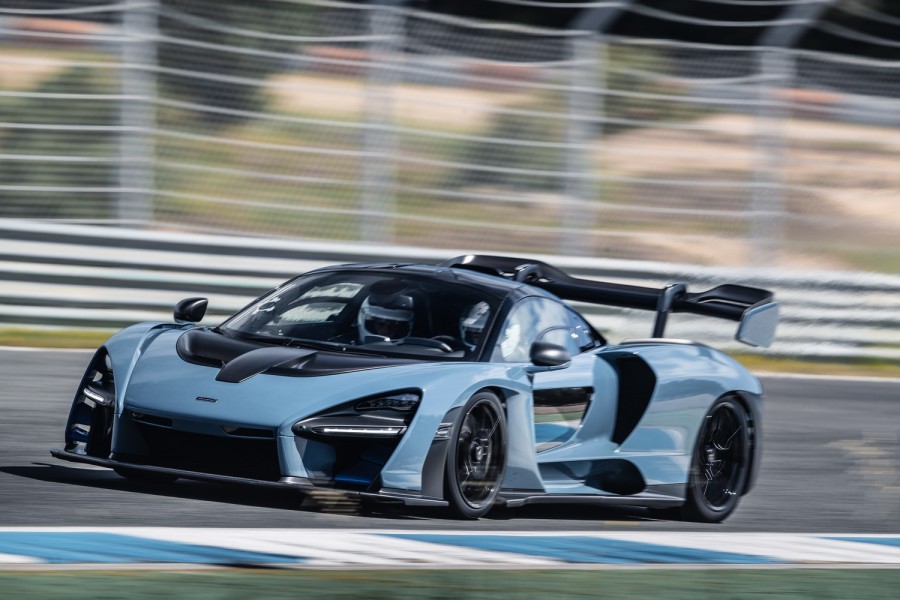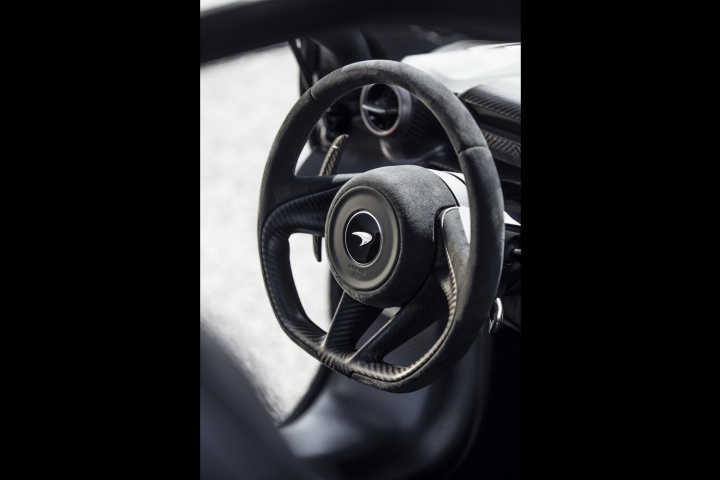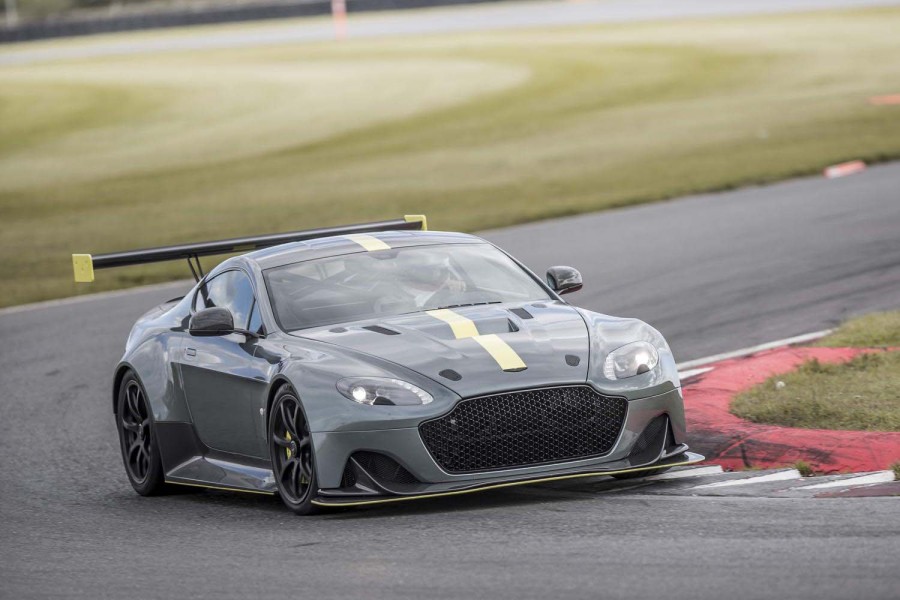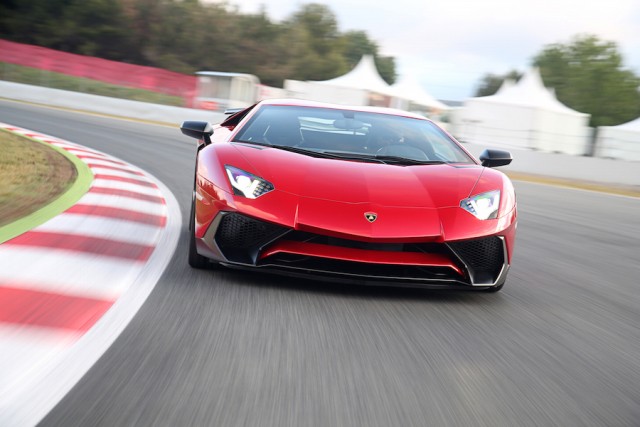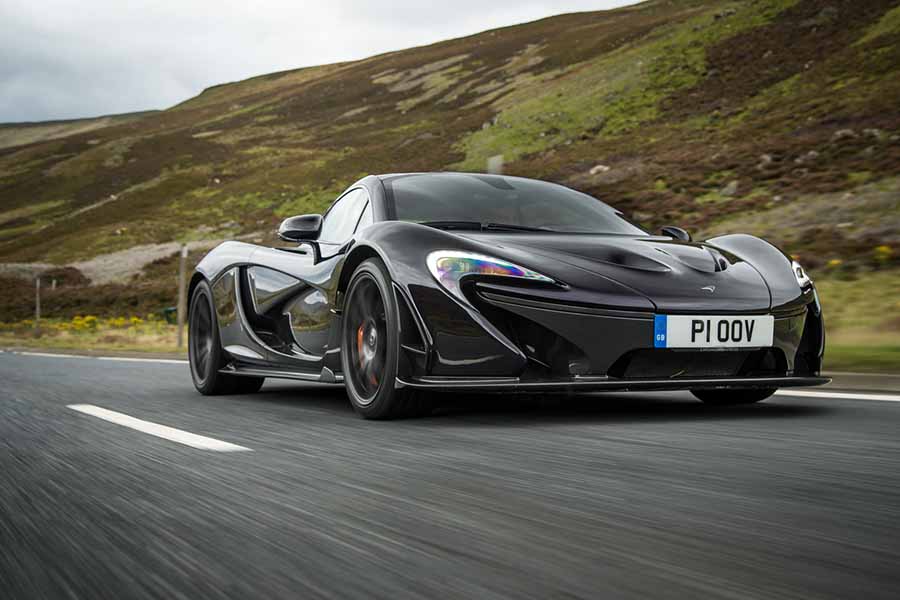McLaren is making a very big, very bold statement with its Senna. Here's a track-focused (but road-legal) supercar that surpasses anything it has created yet. The form-follows-function appearance has been dictated by innovative active aerodynamic requirements, which in turn make the Senna astoundingly capable on a race circuit, challenging you to raise your own driving game. Despite the fact that all 500 examples of the Senna have been sold, we were granted half a day behind the wheel at the Estoril race circuit in Portugal, the very place that Ayrton Senna himself won his first Grand Prix.
In the metal
Let's not kid ourselves: the looks of the McLaren Senna are not universally liked. And I'm not about to tell you that I now think it's conventionally beautiful, having spent time in its company - it's just not. However, that doesn't stop it being an incredible creation. The design and aerodynamics teams at McLaren worked hand-in-hand from the start and it's clear that the latter's requirements were high up the agenda. That explains some of the odd proportions and stretched front overhang, for example. The long front splitter is obvious (it's longer even than that of the McLaren P1 GTR's, a track-only car, remember), but the active aero blades may not be, depending on the colour they've been finished in. The movement of these is controlled in conjunction with the active rear wing to automatically balance aerodynamic forces along the car at all speeds.
Before we get to the engineering marvel that is the rear wing, it's worth lingering over the detailing of the rear bodywork, aft of the teardrop-shaped glasshouse. Very unusual curved 'gurney flaps' sit above a set of stepped louvres that manage airflow around the back of the car and under the wing above. The three-exit exhaust also features prominently, in an almost horizontal position, ahead of super-thin LED lights. And now that wing... It's hydraulically operated and moves through 35 degrees of adjustment in the blink of an eye, reducing drag on the straights and balancing the aerodynamic downforce elsewhere, including when decelerating hard from high speeds. Even the unusual 'swan-neck' support pylons have been optimised for maximum downforce and minimum drag. Next to all that, the double diffuser is all but invisible underneath the car, but it contributes to the incredible overall quoted downforce figure of 800kg at 250km/h.
Once you've finished poring over the exterior detailing (and there's much more than I've gone into, here), it's time to open the lightweight carbon dihedral doors. They cleverly take a large portion of the roof and the side sill with them, so it's not as difficult to get yourself into the bucket seats as you might expect. Buyers of the Senna can even specify glass for the lower sections of the doors to enhance the interior ambience and make them feel closer to the road/track outside. McLaren's 'Monocage III' carbon body structure allows for thin roof pillars and excellent visibility out front, though the rear view is blocked by default (and can be optionally glazed instead). There are three grades of sports seats available and the 'regular' chairs fitted to our test car were snug, but not at all uncomfortable. There are three-point seatbelts for everyday use and optional six-point harnesses, too.
The interior design is quite minimal, with lots of stylised carbon fibre weave, though it's beautifully put together and not without equipment, including crucial air conditioning (optional, but at no extra cost) and our car even had a seven-speaker Bower & Wilkins audio system (as if it ever will be used...). A compact portrait-style touchscreen is close to hand to operate most sub-systems and the digital instrumentation ahead of the driver can be tilted down into a minimal configuration, too. Some controls, including the big red engine start button, have been moved to the roof, apparently to both reduce the weight of the wiring harness and allow the whole cabin package to be reduced in size for aerodynamic purposes.
Driving it
It's saying something when McLaren lined up examples of its 720S model to carry out familiarisation laps of the race track in. That, in case you've forgotten, is a bona fide supercar sending 720hp and 770Nm of torque to the rear wheels, using a twin-turbocharged V8 that is closely related to that of the new Senna. And it's saying something else that the Senna completely overshadowed it, a car that we called a 'game-changer' for the company. Even before we leave the pitlane in the Senna, it feels like a very different beast. You sit close to your passenger and the stiffer engine mounts mean there's a lot more vibration and noise transmitted through to the cabin. It sounds angry and impatient.
And yet, thanks to the smooth seven-speed 'SSG' transmission, it's a doddle to pull away from rest in. Saying that, one of my few real criticisms of the car is that the gearchange action using the paddles behind the flat-bottomed steering wheel isn't quite positive enough - there's precious little sense of having pulled the paddle enough. I'd like them to be more mechanical in feel. No doubt they're more efficient as they are, but I'd argue that this car is designed first and foremost for the enjoyment and engagement of its driver.
Once we're up to full speed, there's little time to be thinking about anything else. For the purposes of our test drive, we have two sessions of six laps apiece, with a professional McLaren instructor sitting alongside to help us get the most from the car. Though the Senna is road legal, and has Comfort, Sport, Track and Race driving modes to choose from, we're straight into the latter for our time at the wheel. This drops the nose by 39mm on its sophisticated RaceActive Chassis Control II suspension, while the rear drops by 30mm, the difference causing rake, for aerodynamic purposes. The higher spring rates can be felt immediately, even at slow speeds, and the bumps of Estoril are accentuated at pace, but it rides kerbs well and never feels completely thrown off line.
Indeed, even if it were, you'd know about it in plenty of time, so rich is the vein of communication coming through the perfectly-weighted steering and brakes. McLaren continues to use electro-hydraulic assistance for its steering while most have gone for fully electric systems and it pays dividends in terms of feedback. While dry weather grip on the bespoke Pirelli P Zero Trofeo R tyres is insane, it's surprising how quickly you find yourself comfortable with approaching the limits, as they're clearly telegraphed to your hands and rear end. Before long we're trail-braking into the sweeping corners at ever higher speeds and using the seemingly never-ending band of revs to the full whenever possible to shorten the distance between curves. I even get comfortable with trusting the downforce to allow a high-speed kink to be taken flat out.
It takes a while longer to get to grips with the astounding braking capability of the Senna. The pedal feel is nigh-on perfect and the active aerodynamics work hard to maintain stability, even hauling down from well over 280km/h at the end of the main straight. Once vaguely used to doing this, I sneak a glance in the door mirror just as I hit the brake pedal and see the rear wing rapidly adjust its angle. Brilliant.
Twelve laps are nowhere near enough to get the full measure of the McLaren Senna, but it certainly was enough to show that this is an astounding creation, developed to immerse the driver in the experience like few others. Everyone that drove it the same day admitted needing time to process the onslaught of information and the sensations experienced. It's a car that, while not difficult to drive, will challenge its owner to raise their game to its level, a level that is ridiculously high for a vehicle that is technically road-legal. To experience it from behind the wheel has truly been one of the highlights of my career to date and begs the question: how can McLaren better this for visceral track-capable appeal?
What you get for your money
Your eyes do not deceive you: we have given a car that would cost about €1.36 million to import and drive on Irish roads the full five stars for value. Any other rating would be nonsense, as McLaren has sold every last one of the 500 examples of the 'standard' Senna, most of them with additional personalisation through its MSO division. It has also sold all 75 GTR variants, the track-only model with even more power and downforce (and cost). It's highly likely that the value of both will appreciate over time, too, so yes, it's a bargain. *Runs for the hills.*
Summary
Think not of the McLaren Senna as cashing in on the great man it's named for, but instead a celebration of his life, his abilities and, perhaps most aptly, the intensity with which he applied himself. Intensity is at the heart of the new range-topping McLaren, giving its lucky owners a truly special driving experience that, like the legend, will live on in their memory forever.

